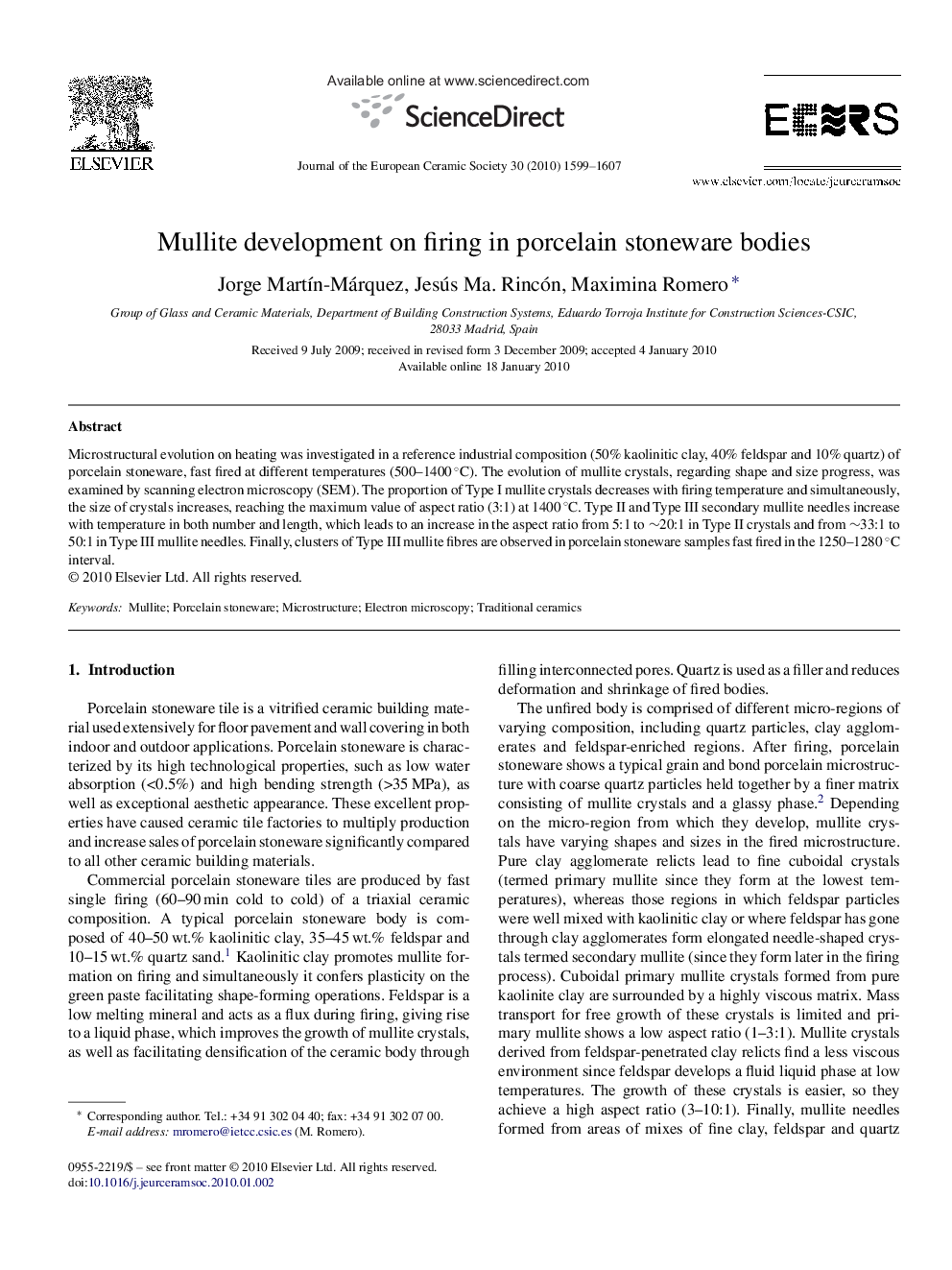| Article ID | Journal | Published Year | Pages | File Type |
|---|---|---|---|---|
| 1475888 | Journal of the European Ceramic Society | 2010 | 9 Pages |
Microstructural evolution on heating was investigated in a reference industrial composition (50% kaolinitic clay, 40% feldspar and 10% quartz) of porcelain stoneware, fast fired at different temperatures (500–1400 °C). The evolution of mullite crystals, regarding shape and size progress, was examined by scanning electron microscopy (SEM). The proportion of Type I mullite crystals decreases with firing temperature and simultaneously, the size of crystals increases, reaching the maximum value of aspect ratio (3:1) at 1400 °C. Type II and Type III secondary mullite needles increase with temperature in both number and length, which leads to an increase in the aspect ratio from 5:1 to ∼20:1 in Type II crystals and from ∼33:1 to 50:1 in Type III mullite needles. Finally, clusters of Type III mullite fibres are observed in porcelain stoneware samples fast fired in the 1250–1280 °C interval.
